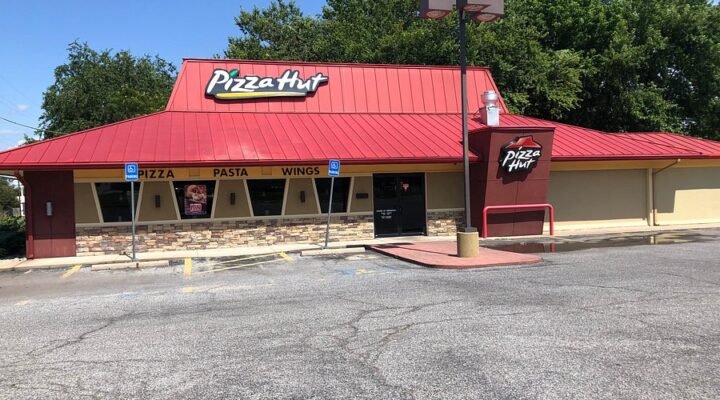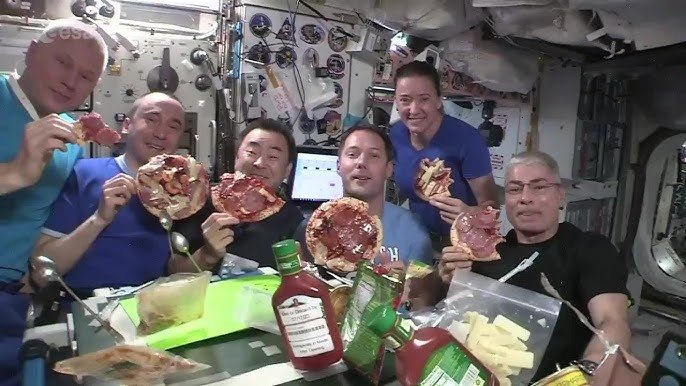Fast Food Marketing, Food and Beverage, Food and Technology, Food Industry, Space Exploration, Weird News
Pizza Delivery to Space: The $1 Million Adventure by Pizza Hut
The Concept of Delivering Pizza to Space
The idea of delivering pizza to the International Space Station (ISS) originated from a combination of creative marketing and the growing public fascination with space exploration. In 2001, Pizza Hut was preparing to celebrate its 40th anniversary and sought a unique way to capture the imagination of consumers. The concept to deliver a pizza to space emerged as an innovative marketing stunt aimed at creating a buzz around the brand. This unconventional approach was intended to highlight both the culinary versatility of pizza and the adventurous spirit that resonates with audiences.
At the time, space travel was gaining renewed interest due to missions conducted by NASA and the burgeoning commercial space tourism industry. Pizza Hut recognized that associating their brand with the excitement and wonder of space exploration could yield significant media attention. The public’s enthusiasm for the idea was palpable, reflecting a broader fascination with space. The campaign proposed what would be a historic and ambitious achievement: delivering a fresh, hot pizza to astronauts aboard the ISS.
The logistics of this endeavor required meticulous planning and collaboration between various stakeholders. Pizza Hut worked alongside aerospace engineers, NASA officials, and specialists in food technology to devise a strategy that would ensure the pizza not only reached the ISS, but also remained appetizing and safe for consumption in a microgravity environment. Additionally, the process involved significant research into food preservation and storage methods, tailoring the pizza for the particular challenges of space travel.
The initial reactions to the concept of interstellar pizza delivery were mixed, with many people expressing excitement while others questioned the practicality of the idea. Nonetheless, the combination of innovation, teamwork, and the desire to make history effectively set the stage for what would become an iconic moment in both culinary and space exploration narratives.

The Logistics Behind Space Pizza Delivery
Delivering a pizza to the International Space Station (ISS) is an extraordinary challenge that goes far beyond the simple act of placing an order and waiting for delivery. The logistics involved in this endeavor require meticulous planning and adherence to strict food safety protocols. Firstly, any food intended for space travel must meet specific safety and nutritional standards, dictated by NASA. These guidelines ensure that the items remain safe and consumable in the unique environment of low gravity.
Food for space travel must be lightweight, compact, and able to withstand the rigors of launch and storage. For instance, the water content in an ordinary pizza would pose a significant risk, potentially leading to spoilage or bacterial growth. Hence, Pizza Hut collaborated with food scientists and engineers to create a version of pizza that could endure the conditions of space. This involved employing dehydrated ingredients, ensuring all toppings could be safely maintained, and packaging them in vacuum-sealed containers to guarantee freshness and safety upon arrival.
The packing process takes into consideration the limited space available within the spacecraft. Each pizza must be carefully situated within the cargo, ensuring it does not shift during transit and that it remains intact for the astronauts. Following preparation, the shipment must also adhere to the stringent timelines associated with ISS resupply missions, as the delivery timeline can significantly impact the quality and consumption of the food once it reaches the orbiting station.
The detail that goes into the logistics of space pizza delivery exemplifies the intersection of culinary creativity and advanced technology. By marrying these disciplines, Pizza Hut successfully navigated the complex requirements of NASA, ensuring that their pizza could be enjoyed by astronauts as part of their nutrition plan during their time in space.
The Moment of Delivery: Pizza in Space
The landmark delivery of pizza to the International Space Station (ISS) represents a fascinating intersection of culinary delight and space exploration. On November 12, 2001, this unprecedented event unfolded, with Pizza Hut making headlines by delivering a pizza to astronauts stationed aboard the ISS. As the specially designed pizza, a large pepperoni choice, arrived, the excitement was palpable among the crew members. This moment marked not just a delivery but a significant point in how food can transcend terrestrial boundaries.
Upon receiving the pizza package, the astronauts expressed their amazement and enthusiasm. For individuals living in microgravity, the prospect of indulging in a familiar food item provided a taste of home and a psychological boost, crucial for long-term missions. The procedure followed for consuming the pizza in such a unique environment required innovative thinking. The pizza was vacuum-sealed to ensure freshness and prevent any floating debris in microgravity, presenting both a culinary and logistical challenge.
Once unwrapped, the crew utilized specially designed utensils to handle the pizza. Each bite had to be carefully managed to prevent the toppings from detaching and drifting away, a common occurrence for food in space. This creative method of consumption highlighted the need for adaptive culinary solutions in outer space. The delivery of pizza to the ISS emphasized how fast-food culture has been embraced even in the depths of space, promoting nutrition and comfort food for astronauts who often experience long stretches away from Earth.
Overall, this event stands as a testament to how even the simplest of pleasures, like enjoying a pizza, can make a significant impact on the morale of those exploring the final frontier. It symbolized a bridging of worlds, merging fast-food culture with the excitement of space adventures, thereby creating a unique narrative in the history of space exploration.
The Aftermath and Impact of the Delivery
The delivery of pizza to the International Space Station (ISS) marked a remarkable moment not just for Pizza Hut but for the entire food industry. Following the launch and successful delivery of a pizza to space, the event garnered significant media attention, drawing interest from numerous demographics. This adventurous marketing campaign positioned Pizza Hut as a pioneer in the integration of unconventional experiences, establishing it as a brand willing to push limits and explore new frontiers.
Public reception was overwhelmingly positive, with many viewing the initiative as a whimsical yet ambitious endeavor. The event generated extensive social media buzz, enhancing brand visibility and engagement. As a result, Pizza Hut experienced an impressive uptick in customer interest and sales, capitalizing on the publicity gained from this unprecedented event. The delivery served not only as a promotional stunt but also as a testament to the intersection of food and space exploration, further elevating the brand’s status in the competitive food market.
The impact extended beyond Pizza Hut, stimulating conversations within the food industry regarding the future of culinary experiences in space. Experts began to address the practicalities of food preparation and consumption beyond Earth’s atmosphere, raising intriguing questions about nutrition and palatability for astronauts. Additionally, the event contributed to a growing movement toward space tourism; as people began to consider the potential for dining experiences in extraterrestrial locales, it ignited curiosity about what kinds of food would be viable in zero gravity. This unique combination of culinary delight and technological innovation spurred discussions that may play a crucial role in shaping the future of food delivery in space.
As we ponder the future of dining beyond our planet, the Pizza Hut delivery to the ISS serves as an emblematic case study. This event not only showcases the ingenuity of marketing strategies but also presents a pathway for future culinary endeavors in space exploration. The lasting impressions of this venture into outer space continue to inspire both creativity and practicality in the realm of food delivery services beyond Earth.
Food and Coffee
Funny and Sarcastic
Funny and Sarcastic
😊🌀 Alternate Reality Unisex T-Shirt – Smiles from Another Dimension

















